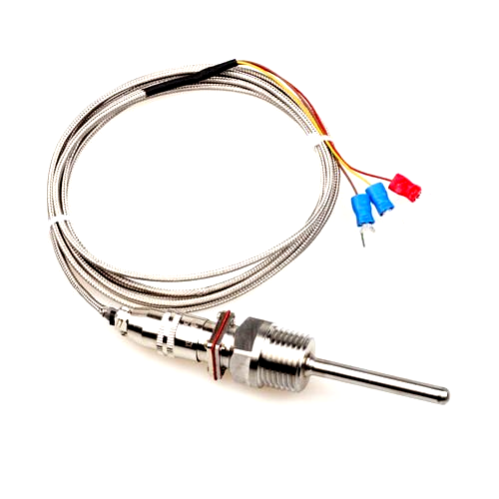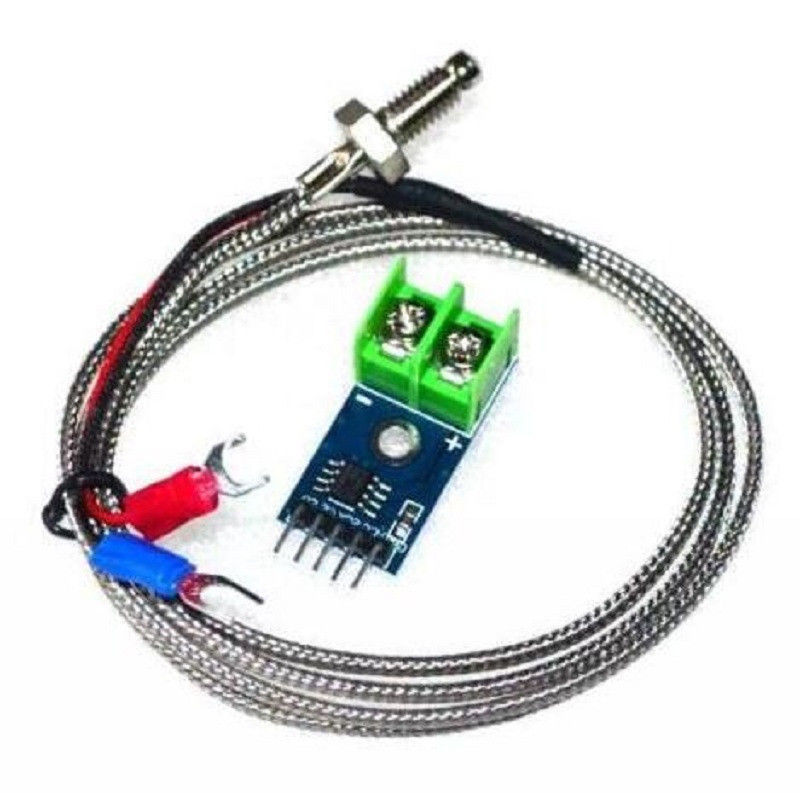

.jpeg&width=620&quality=80)


.jpeg&width=172&quality=80)


.jpeg&width=300&quality=80)
MAX 6675 K TYPE TEMPERATURE SENSOR
An RTD stands for “Resistance Temperature Detector” and it is a sensor which is used to measure temperature. It works following a basic principle of when the temperature of a metal increases, the resistance to the flow of electricity increases as well.
₹ 287 ₹399
399




| Made In : | India |
Add FAQ
RTD (Resistance Temperature Detector) Temperature Sensors are widely used for precise temperature measurement due to their accuracy and stability. RTDs operate on the principle that the electrical resistance of a metal (usually platinum) changes with temperature.
RTD Temperature Sensor Overview:
1. Key Features:
-
Temperature Range:
- RTDs can measure a wide range of temperatures, typically from -200°C to 850°C (-328°F to 1562°F), depending on the specific type and construction.
-
Accuracy:
- RTDs are known for their high accuracy and repeatability, making them suitable for applications requiring precise temperature measurements.
-
Stability:
- RTDs offer excellent long-term stability and minimal drift over time.
-
Material:
- The sensing element is usually made from pure platinum (Pt), which provides a near-linear resistance-temperature relationship over a wide temperature range.
2. Working Principle:
-
Resistance Change:
- The resistance of the RTD element increases with temperature. This change in resistance is measured and converted into a temperature reading.
-
Temperature Coefficient:
- The RTD’s resistance changes at a known rate with temperature, defined by its temperature coefficient. For platinum RTDs, this coefficient is typically 0.00385 ohms per ohm per degree Celsius (°C).
3. Types of RTDs:
-
PT100:
- Resistance at 0°C: 100 ohms
- Temperature Coefficient: 0.00385 ohms/ohm/°C
- Applications: Widely used in industrial and scientific applications for its accuracy and wide temperature range.
-
PT1000:
- Resistance at 0°C: 1000 ohms
- Temperature Coefficient: 0.00385 ohms/ohm/°C
- Applications: Often used in applications requiring higher resistance for better signal-to-noise ratio, such as in medical devices and HVAC systems.
-
Other Types:
- RTDs are available in various configurations with different resistance values and temperature coefficients, including PT500, PT200, and custom variants.
4. Circuit Connections:
-
2-Wire Configuration:
- Wiring: Connects the RTD element directly to the measurement device.
- Advantages: Simple and low-cost.
- Limitations: Susceptible to errors due to lead wire resistance.
-
3-Wire Configuration:
- Wiring: Uses three wires to connect the RTD to the measurement device.
- Advantages: Compensates for lead wire resistance, improving accuracy.
- Limitations: Slightly more complex than 2-wire.
-
4-Wire Configuration:
- Wiring: Uses four wires, with two wires carrying the excitation current and two wires measuring the voltage drop across the RTD.
- Advantages: Provides the highest accuracy by completely eliminating lead wire resistance effects.
- Limitations: Most complex and costly.
5. Applications:
-
Industrial Processes:
- Monitoring and controlling temperature in manufacturing and processing industries.
-
Laboratories:
- Precise temperature measurements in scientific experiments and research.
-
HVAC Systems:
- Used in heating, ventilation, and air conditioning systems for temperature control and monitoring.
-
Medical Devices:
- Employed in medical equipment for accurate temperature measurement, such as in incubators and patient monitoring systems.
-
Environmental Monitoring:
- Used in weather stations and environmental sensors to measure ambient temperatures.
6. Advantages:
-
Accuracy and Precision:
- High accuracy and minimal drift make RTDs suitable for precise temperature measurement.
-
Stability:
- Provides stable and consistent measurements over time.
-
Wide Temperature Range:
- Suitable for a broad range of temperatures.
7. Limitations:
-
Cost:
- Generally more expensive than other temperature sensors, such as thermocouples or thermistors.
-
Size:
- Can be larger and more fragile than other types of temperature sensors.
-
Complexity:
- Requires proper calibration and wiring configuration to achieve accurate results.
Example Use Case:
Industrial Temperature Control:
- In an industrial furnace, a PT100 RTD sensor might be used to monitor and control the temperature precisely. The sensor’s accurate resistance measurement allows for precise control of the furnace’s heating elements to maintain the desired temperature.
Summary:
RTD temperature sensors are valued for their accuracy, stability, and wide temperature range. By measuring the change in electrical resistance of a metal element, typically platinum, RTDs provide precise temperature readings. They are widely used in various applications including industrial processes, scientific research, HVAC systems, and medical devices. Different configurations (2-wire, 3-wire, and 4-wire) and types (PT100, PT1000) offer flexibility to meet specific measurement needs. For accurate temperature measurements, proper calibration and understanding of the RTD's characteristics are essential.

0 Reviews For this Product












.jpg&width=225&quality=80)
